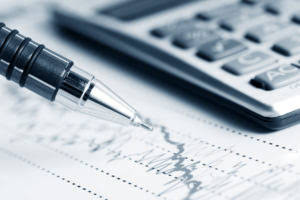
Current assets are those assets that are easily converted into cash within a year or are expected to be used up within the year. However, for companies whose operating cycle is longer than one year, any Asset expected to be converted into cash within the operating cycle can classified as a Current Asset. An operating cycle is the average period of time it takes for the company to produce the goods, sell them, and receive cash from customers. Another way to boost your current assets is by exploring short-term, liquid investments, including certificates of deposit (CDs) with short maturity periods, Treasury bills, or high-yield savings accounts. These types of investments provide a way to earn interest or returns on idle cash while still having access to your funds when you need it. Typically, businesses will list their current assets https://www.bookstime.com/what-is-bookkeeping on a balance sheet , in descending order of liquidity.

How can one determine the current assets of a company?

Working capital is important because it represents your ability to pay short-term obligations. Current liabilities are important because they represent the amount of money that you owe to how is sales tax calculated creditors. This can help a company improve its financial health and avoid defaulting on its loans. The same can be said for current assets, they’re immediate and easily accessible. For example, when a company sells a product to a customer, the inventory used is recorded as COGS (cost of goods sold) on the income statement. Therefore, maintaining current assets at an optimal level is vital for any company.
- The cost of inventory includes all the costs that are necessary to bring goods into a place and condition in which they can be sold further.
- Therefore, these trading securities need to be recorded at their fair value after the initial acquisition.
- It’s important to strike a balance and manage current assets efficiently.
- These three ratios can help you evaluate your business’s ability to cover current liabilities and expenses, as well as the ability to meet outstanding obligations.
- If you have any other current assets that can easily be converted into cash within a year (like promissory notes or tax refunds, for example) that do not fit into any of the above categories, list them here.
What are current assets on a balance sheet?
A company’s assets on its balance sheet are split into two categories – current and non-current (long-term or capital assets). The composition of current assets can vary significantly across industries. For example, manufacturing companies may have large inventories, while service-based companies may have less. A high inventory are any assets easily converted into cash within one calendar year figure might not always be a sign of financial health; it could indicate poor inventory management.
Challenges of Managing Current Assets
This includes things like cash on hand, investments, accounts receivable, and inventory. It provides an overview of the company’s assets, liabilities, and equity. The balance sheet can assess a company’s financial health and calculate important ratios such as the current ratio. Some assets are easier to convert into cash than others, and that’s the key distinction between current assets and fixed assets. While current assets can be converted into cash within one year, it can take several years to turn fixed assets into cash. For instance, it can take Chipotle multiple years to sell one of its properties if it decides to exit an area.


Hence, the contents of current assets need to be carefully examined to establish the true liquidity of a company and ensure it is not overstated. Inventories are classified as current assets because stock can be sold relatively quickly. A current ratio above 1.0 indicates that a company can keep up with its current liabilities. While a good current ratio depends on the industry due to varying profit margins and expectations, a current ratio from 1.5 to 2.5 tends to indicate a promising company. Alphabet has an exceptional current ratio that demonstrates a strong financial position.
